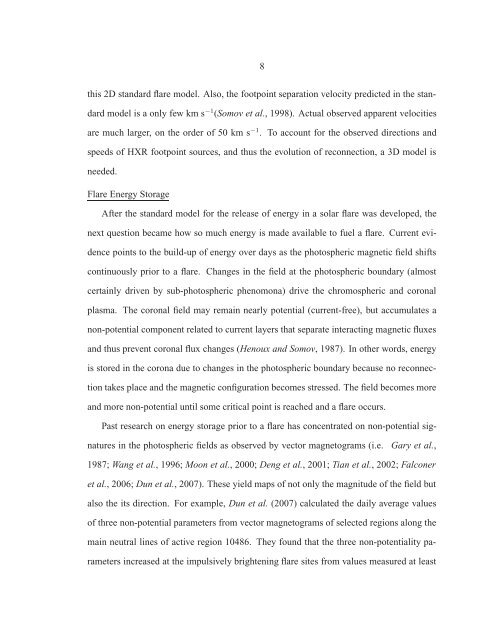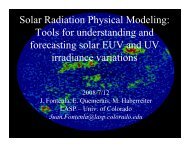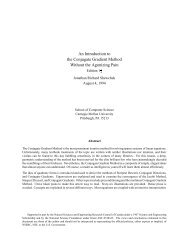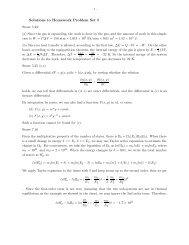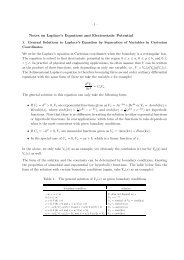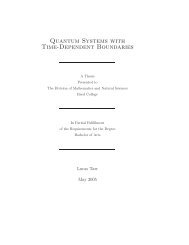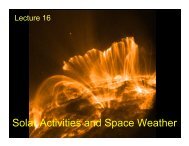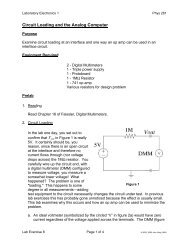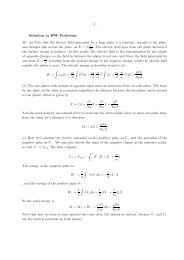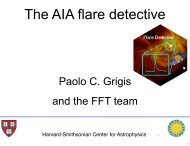The Topology of Magnetic Reconnection in Solar Flares
The Topology of Magnetic Reconnection in Solar Flares
The Topology of Magnetic Reconnection in Solar Flares
Create successful ePaper yourself
Turn your PDF publications into a flip-book with our unique Google optimized e-Paper software.
8this 2D standard flare model. Also, the footpo<strong>in</strong>t separation velocity predicted <strong>in</strong> the standardmodel is a only few km s −1 (Somov et al., 1998). Actual observed apparent velocitiesare much larger, on the order <strong>of</strong> 50 km s −1 . To account for the observed directions andspeeds <strong>of</strong> HXR footpo<strong>in</strong>t sources, and thus the evolution <strong>of</strong> reconnection, a 3D model isneeded.Flare Energy StorageAfter the standard model for the release <strong>of</strong> energy <strong>in</strong> a solar flare was developed, thenext question became how so much energy is made available to fuel a flare. Current evidencepo<strong>in</strong>ts to the build-up <strong>of</strong> energy over days as the photospheric magnetic field shiftscont<strong>in</strong>uously prior to a flare. Changes <strong>in</strong> the field at the photospheric boundary (almostcerta<strong>in</strong>ly driven by sub-photospheric phenomona) drive the chromospheric and coronalplasma. <strong>The</strong> coronal field may rema<strong>in</strong> nearly potential (current-free), but accumulates anon-potential component related to current layers that separate <strong>in</strong>teract<strong>in</strong>g magnetic fluxesand thus prevent coronal flux changes (Henoux and Somov, 1987). In other words, energyis stored <strong>in</strong> the corona due to changes <strong>in</strong> the photospheric boundary because no reconnectiontakes place and the magnetic configuration becomes stressed. <strong>The</strong> field becomes moreand more non-potential until some critical po<strong>in</strong>t is reached and a flare occurs.Past research on energy storage prior to a flare has concentrated on non-potential signatures<strong>in</strong> the photospheric fields as observed by vector magnetograms (i.e.Gary et al.,1987; Wang et al., 1996; Moon et al., 2000; Deng et al., 2001; Tian et al., 2002; Falconeret al., 2006; Dun et al., 2007). <strong>The</strong>se yield maps <strong>of</strong> not only the magnitude <strong>of</strong> the field butalso the its direction. For example, Dun et al. (2007) calculated the daily average values<strong>of</strong> three non-potential parameters from vector magnetograms <strong>of</strong> selected regions along thema<strong>in</strong> neutral l<strong>in</strong>es <strong>of</strong> active region 10486. <strong>The</strong>y found that the three non-potentiality parameters<strong>in</strong>creased at the impulsively brighten<strong>in</strong>g flare sites from values measured at least


